È il celebre architetto spagnolo Rafael Moneo (classe 1937), Pritzker Prize nel 1996, il vincitore della VI edizione del Premio Internazionale di Architettura Sacra, rivolto ai nuovi edifici religiosi di culto cristiano realizzati in tutto il mondo. La sua Chiesa di Iesu, a San Sebastian (Spagna), dalle forme pulite e compatte, che alternano pieni e vuoti, ha conquistato la Giuria, che all’unanimità ha deciso di assegnarle il primo premio.
Al secondo posto si è classificata la Chiesa Nuova della Parrocchia di KaDon, a Don Duong, nella Provincia di Lam Dong, in Vietnam, realizzata nel 2014 dagli architetti Thu Huong Thi Vu e Tuan Dung Nguyen, con materiali semplici come legno e ferro, che valorizzano il rapporto con la natura e l’apertura degli spazi verso l’esterno.
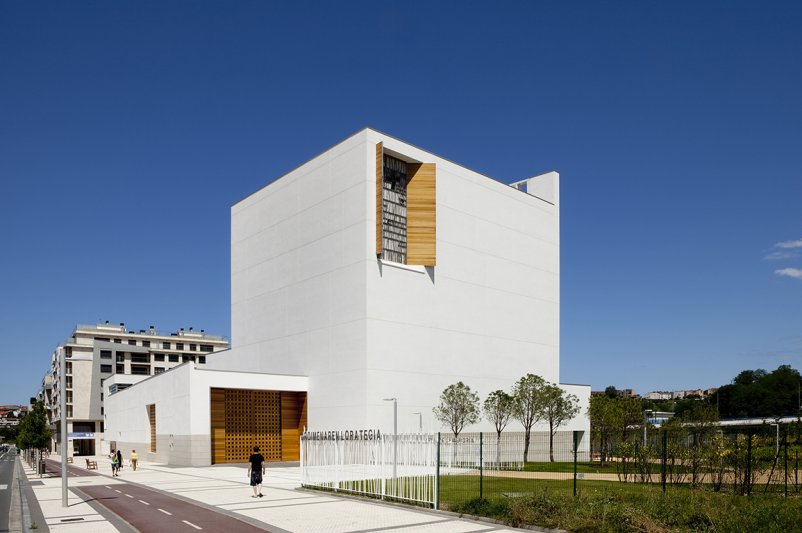
La nuova Chiesa St. Trinitatis nella città di Lipsia (Germania) – la più grande chiesa cattolica della ex Ddr – dello studio tedesco di architettura Schulz und Schulz ha ottenuto il terzo premio. Gli architetti hanno lavorato sul rapporto con la storia e il luogo, scegliendo un materiale come il porfido, la stessa pietra rossa, porosa ma durissima, con cui sono costruiti i monumenti più significativi della città. Ispirata a principi di sostenibilità energetica, la chiesa è dotata di un sistema geotermico, progettato dagli scienziati del Politecnico di Dresda.
Non solo “archi-star” quindi, e premi a grandi nomi dell’architettura universalmente conosciuti, ma anche un impegno a valorizzare il lavoro di professionisti meno noti ma altrettanto eccellenti nel proprio lavoro: accanto ai primi tre classificati, la Giuria ha scelto di conferire un particolare riconoscimento ad altri due lavori.
Le menzioni speciali vanno alla Cappella St. John the Baptist, realizzata con pietra e legno nel quartiere berlinese di Johannisthal dallo studio tedesco di architettura Brückner & Brückner, e alla semplice e austera Cappella Saint John Baptist, ideata, come un triangolo scaleno che si inserisce perfettamente nel paesaggio, dall’architetto spagnolo Alejandro Beautell, a Tenerife, nelle Canarie.
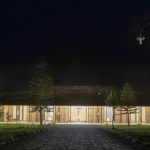
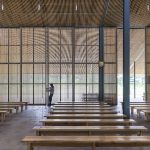
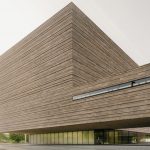
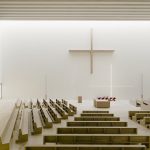
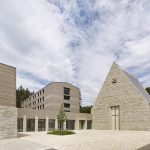
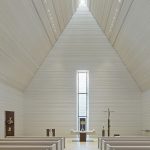
José Rafael Moneo Vallés, più conosciuto come Rafael Moneo, è nato nel 1937 a Tudela, in Navarra, ha studiato a Madrid dove vive e lavora.
Direttore per molti anni della più famosa scuola di architettura degli Stati Uniti, la Graduate School of Design di Harvard, ha insegnato architettura a Barcellona, Losanna, New York, Princeton, Harvard e Madrid, ed è l’unico architetto spagnolo ad aver vinto il premio Pritzker.
Moneo ha costruito architetture peculiari e riconoscibili, all’insegna della limpidezza e della precisione. I suoi edifici possiedono quella compattezza che l’architetto dichiara come chiave di volta per una nuova modernità che rappresenta il futuro dell’architettura.
Le sue opere dialogano con l’identità del luogo, l’amplificano e la interpretano.
Accade con i grandi interventi come la Kursaal Concert Hall di San Sebastián o come il notevole ampliamento del Prado a Madrid, che riflette l’attenzione di Moneo per un contesto storico così complesso, affascinante e delicato – riuscendo a inserirsi in totale armonia pur con un intervento completamente diverso –.
E accade con interventi più piccoli ma simbolici, come il Municipio di Murcia, e persino quando si tratta di alberghi, come l’Hyatt di Berlino, dove l’architetto riesce a ritagliare uno spazio d’identità nel contesto discusso di Potsdamer Platz.
Tra le sue opere più importanti ricordiamo anche: il Museo di arte romana di Mérida, la stazione Atocha di Madrid, l’aeroporto di Siviglia, il Museo d’arte moderna di Stoccolma, la cattedrale Lady of Angels a Los Angeles, l’ospedale pediatrico Gregorio Marañón a Madrid.
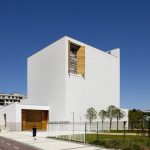
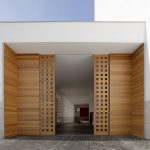
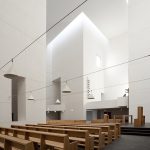
In equilibrio tra emozione e rigore, la Chiesa di Iesu (inaugurata nel 2011) sorge in uno dei quartieri più recenti della città basca, quello di Riberas de Loiola, dove l’edificio religioso, unitamente all’adiacente Giardino della Memoria, viene a costituire un nuovo punto di riferimento. L’architettura, che lo stesso Moneo definisce come “generosa negli spazi e molto modesta nei materiali” si contraddistingue (sia esternamente che internamente) per il bianco astratto e minimalista delle pareti, elemento che richiama il colore dominante dei fiori del vicino parco e soprattutto le importanti costruzioni razionaliste presenti a San Sebastián, come il Real Club Nàutico e l’edificio “La Equitativa”. Il complesso è formato da tre elementi: la chiesa propriamente detta, collocata all’interno di un volume cubico e rivolta a oriente; un corpo “a elle”, che ospita diversi locali tra cui il centro parrocchiale; un muro che chiude il patio-giardino situato tra i due edifici e che filtra il passaggio dallo spazio aperto della strada a quello mistico del tempio.
La navata della chiesa possiede una pianta a croce, ricavata all’interno di un quadrilatero più grande; negli spazi che completano la figura trovano posto, alla sinistra, la sacrestia e il battistero, e, alla destra, la Cappella del Santissimo Sacramento e quella della Riconciliazione; l’impianto cruciforme della tradizione viene attualizzato mediante un disegno asimmetrico, che dà modo di “riflettere le tensioni del mondo di oggi”, secondo quanto afferma lo stesso architetto, e un rimando allo scultore basco Eduardo Chillida e alla sua Croce della Pace, ospitata nella Cattedrale di San Sebastian.
Un ruolo fondamentale è giocato dalla luce naturale che, entrando all’interno con modalità differenti, riesce a connotare ogni spazio in maniera peculiare; emerge in particolare l’illuminazione zenitale della navata principale, dovuta alle aperture poste in copertura che ne evidenziano l’impianto cruciforme e capace di evocare immediatamente il messaggio evangelico e di trasportare il fedele in una dimensione mistica. Degna di nota è anche la grande vetrata disegnata dallo stesso Moneo e realizzata in alabastro e inserti in vetro rappresentanti una croce, un sole e due lune in fasi distinte.
Il Premio Internazionale di Architettura Sacra è organizzato dalla Fondazione Frate Sole, e patrocinato da Enti locali e Istituti nazionali ecclesiastici e culturali come la Pontificia Commissione per i Beni Culturali Ecclesiastici della Santa Sede, il Ministero per i Beni e le Attività culturali, il Consiglio Nazionale degli Architetti, l’Ordine degli Architetti Pianificatori Paesaggisti della Provincia di Pavia, la Diocesi di Pavia, il Comune di Pavia, l’Università degli Studi di Pavia, l’Ufficio Nazionale dell’Edilizia di Culto, la Provincia di Lombardia dei Frati Minori.
